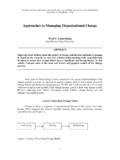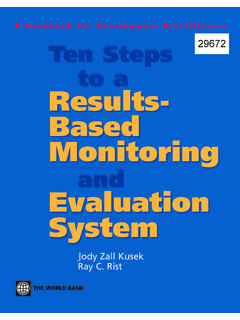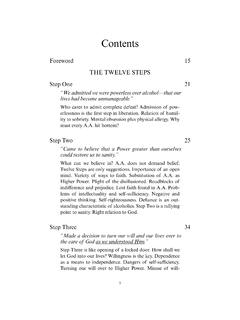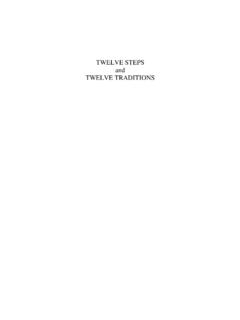Transcription of 5. Scenario Analysis: A Tool for Task Managers
1 625. Scenario analysis : A Toolfor Task ManagersJonathan N. MaackScenario analysis has been used by the privatesector for the last 25 years to manage risk anddevelop robust strategic plans in the face of anuncertain future. Its success in helping firmsmanage large capital investments and changecorporate strategy has made it a standard toolof medium- to long-term strategic have helped public sector agenciesplan for population growth and regionaldevelopment, state transportation investments,and the distribution of landfills. In the develop-ing world, scenarios have been used to high-light the opportunities, risks, and trade-offs innational policy analysis is different from the high,medium, and low cases for lending consideredas part of Country Assistance Strategy (CAS).
2 High, medium, and low scenarios look atdifferent rates of progress along a path that isbased on a single set of projections. Scenarioanalysis focuses on the areas of greatest uncer-tainty for a country or an operation, systemati-cally develops several plausible alternativefuture environments in which the operationmight be implemented, and determines howthey would affect its success. This structuredapproach to thinking about the future could helpWorld Bank country teams make strategic choicesabout where and how to direct lending over themedium term in several ways:Managing risk. scenarios that look at futurepaths for a country help decisionmakersmanage risk and develop concrete contingencyplans and exit strategies.
3 Describing how andwhy possible futures might occur enablesdecisionmakers to reflect on how political,social, and economic changes affect the opera-tion and to plan consensus for change. scenarios are alogically rigorous, transparent means to givestakeholder representatives a role in a number of possible futures arecreated, many perspectives can be included,and the discussion does not revolve around theadvocacy of fixed positions. All participantstake part in formulating the core elements of allscenarios, and later break into smaller groupsto write each of the four or five scenarios . Thisprocess helps decisionmakers share theirthinking about uncertainty and risk, developmutually understood contingency plans, anddefuse blame-casting when forces outside theircontrol lead to a change in strategic understanding about the are designed to bring up issues thatotherwise would not be considered by expos-ing the underlying forces in a sector or are most effective when dealing with bigissues and strategic directions, rather thantactical decisions, and should not be used forshort-term analysis : A Tool for Task ManagersMonitoring progress and scanning changes inthe environment.
4 Scenario analysis can helpestablish indicators that create a framework tomonitor the execution of a strategy. Decision-makers then scan the external environmentfor the agreed indicators that the country orregion is beginning to move toward a differentscenario (or to a different stage along a scenariopath). The focus on key drivers of changemakes explicit the assumptions underlyinglending and speeds mobilization of resourcesin response to changes in the external analysis is a tool with a strong trackrecord and significant potential, but it needs tobe adapted and piloted before it can be morewidely used in the Bank. This chapter describesa Scenario process designed to be the corner-stone of a strategic plan.
5 It also suggests waysto use the key concepts of Scenario thinking inshorter exercises designed to help decision-makers minimize risk, address key uncertain-ties, and more effectively share their thinkingwith stakeholders about a lending programand the country s analysis follows a systematic processto create a set of four to five plausible andvividly contrasting narratives that describepossible evolutions of key areas of uncertainty(figure 1). These narratives, known as sce-narios, examine the social, political, economic,and technological forces that will impact on aproject or strategy. scenarios are arrived at by ateam composed of key decisionmakers, experts,and stakeholder representatives during two orthree one-day workshops held over a period ofweeks or months.
6 Because they focus on areasof uncertainty and the potential for unexpectedfuture discontinuities, scenarios provide aperspective not captured through projectionsbased on past analysis involves constructing ordeveloping scenarios (steps 1-4 below), andintegrating the content of scenarios into decision-making (steps 5-8 below). During the exerciseitself, it is important that both of these elementsreceive equal attention and that mutuallyacceptable triggers and measures of success beagreed as outcomes of the Define a focal issue or decision. scenarios arebest suited to looking at the future through thelens of a specific issue, such as the likelyoutcome of a national election leading to atransfer of power or a currency this grounding, there is a danger thatthey will be too Identify driving forces.
7 These are the social,economic, environmental, political, and techno-logical factors that are most relevant to thefocal issue. They should be prioritized by thescenario team according to their level of pre-dictability and importance in affecting thedesired 1. Diagram of the Scenario ProcessChoose Scenario group Preliminary interviewsPreliminary researchFirst Scenario 4-5 draft scenarios Verify Scenario Write full-length workshop(s) assumptions scenarios4-5 final scenariosReview and revise scenariosImplement operationand monitor progressCommunicatescenariosIndicators forexternal eventsin each scenarioStrategicimplications ofeach scenarioFinal scenarioworkshop(s)Legend :Core Scenario teamFull Scenario team64 Jonathan N.
8 Maack3. Write Scenario plots. These are the storiesthat explain how driving forces interact andwhat effects they have on the operation orstrategic direction being Flesh out scenarios . Good scenarios combinea solid understanding of relevant presenttrends with a clear focus on the outcomessought by decisionmakers. They should incor-porate lessons revealed by analysis of quantita-tive and qualitative data relevant to theassumptions underlying each Look at implications. After scenarios havebeen fully developed, decisionmakers shouldstudy their implications for the outcomes beingsought by the Choose leading indicators. These indica-tors should help decisionmakers monitorchanges in the external environment as well asdevelopments in the Disseminate scenarios .
9 Once scenarios have beenbuilt and refined, they should be written in succinct,easy-to-read language and disseminated withinimplementing organizations and to the Integrate Scenario outcomes in daily proce-dures. Change the incentive system in affectedagencies and areas to ensure concerted move-ment toward the strategic goals that have beenformed on the basis of the scenarios . Use ormodify existing systems to monitor progresstoward operational goals as well as changes inthe external in PracticeThe two primary situations in which scenarioanalysis has been used by the public andprivate sectors are:1. When considering a significant capitalinvestment decision or sectoral strategy2. When developing or reformulating na-tional or corporate analysis for Capital InvestmentsScenario analysis is extensively used in theprivate sector by companies that make largeinvestments in productive capital or researchand development.
10 Utilities, hospitals, oilcompanies, and pharmaceutical companies allinvest significant amounts of money in re-search, development, and site need to make all possible efforts to ensurethat their investments will remain viable overthe long term. Scenario analysis has helpedthem examine the political and regulatoryenvironments, the likely attitudes of consum-ers, and other relevant factors to attempt toensure that their investments continue to beprofitable as conditions change (box 1). scenarios to assess the riskiness of an investmentstrategy need not be simplistic. The process ofidentifying the real focal issue behind an investmentis often quite revealing. For example, Shell OilCompany has used Scenario analysis since the1960s.















